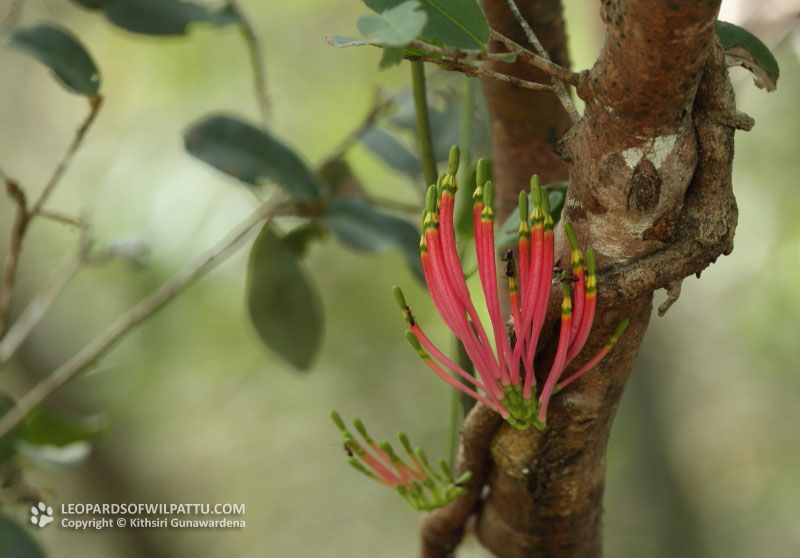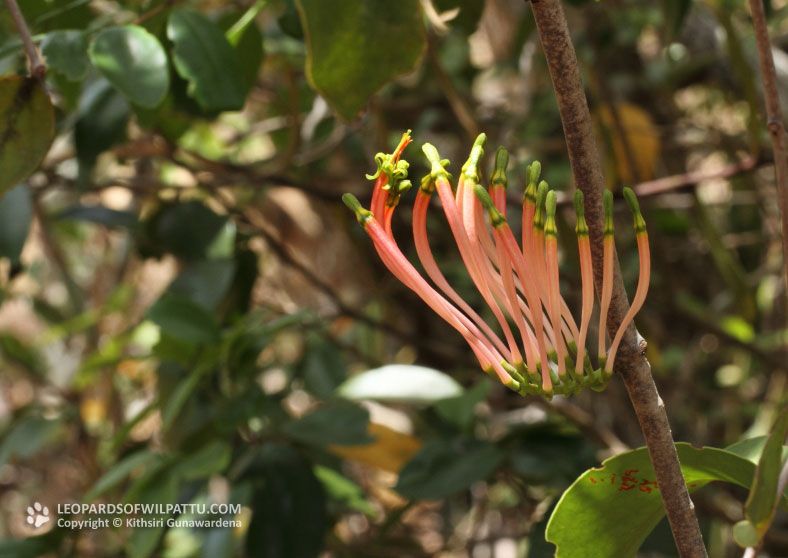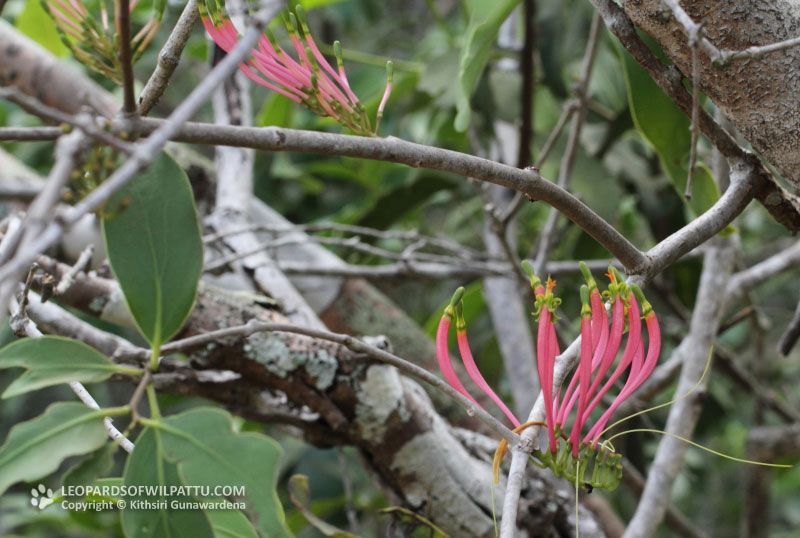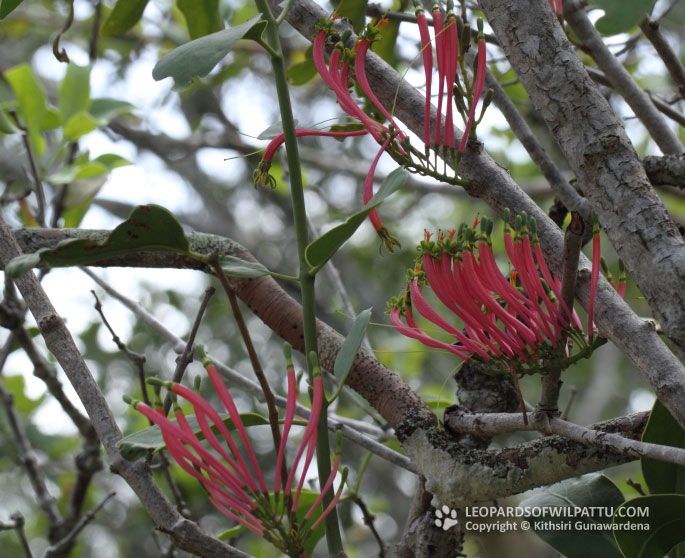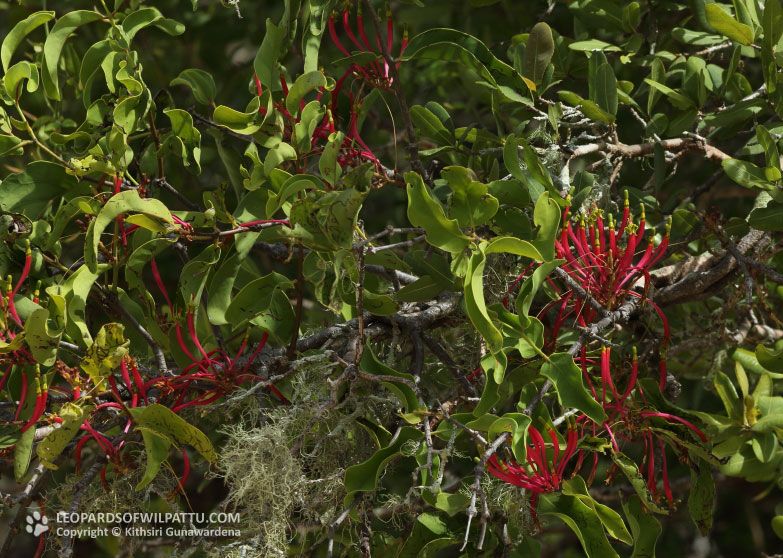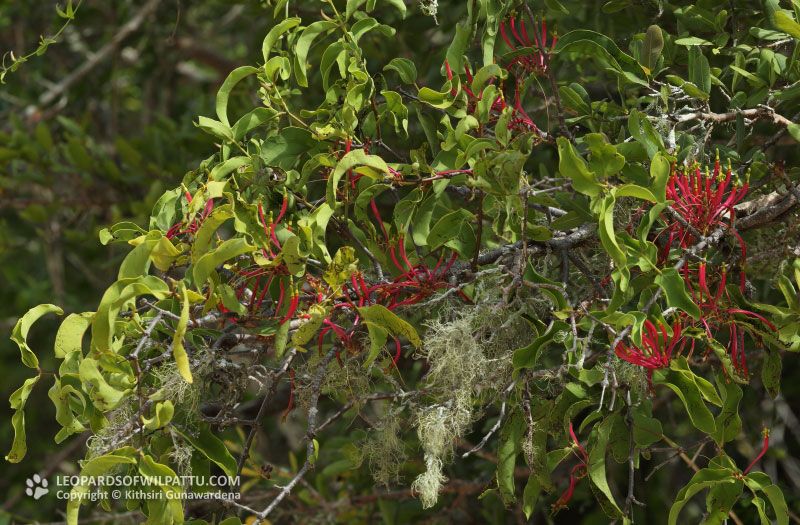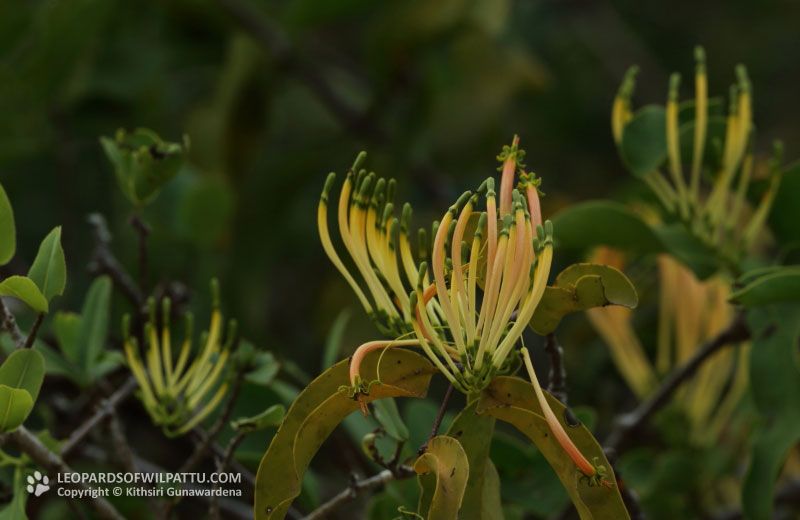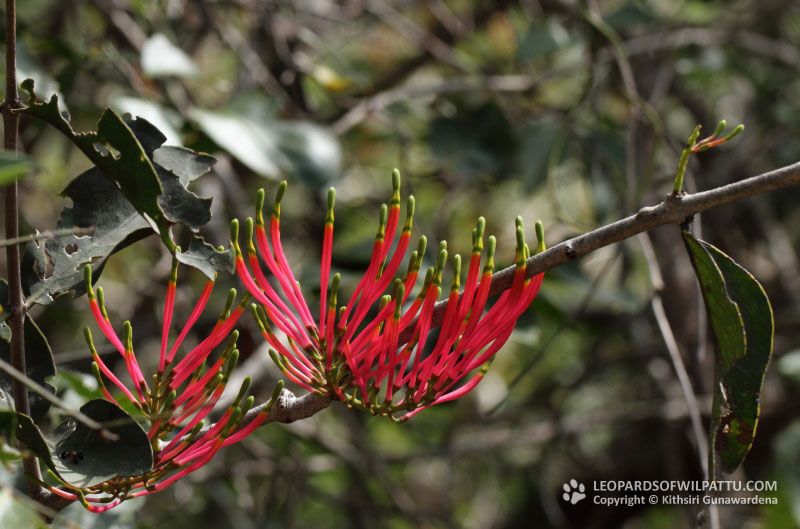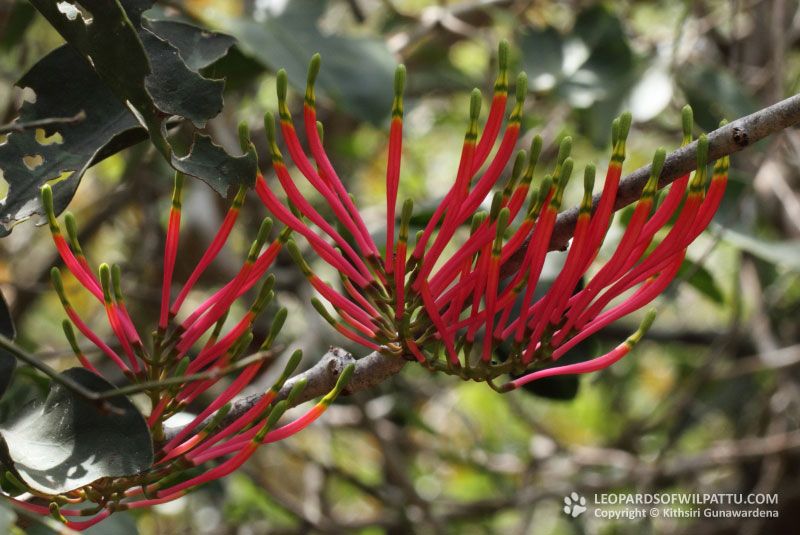
Wild Flowers ‹‹ Go Back
This is a species that belongs to the Loranthaceae family and is found from tropical Africa to India and Sri Lanka. It is a parasitic epiphyte that draws some nutrients from the host tree through its roots. Mistletoe is commonly found on branches of a number of host trees in the wet lowlands, dry and intermediate zones of the country. It is quite common in and around Colombo as well. I have observed the flowers of this species throughout the year which occurs in yellow, pink, orange or scarlet red.
The methodology used by this plant for the dispersal of its seeds on to a branch of another host tree is quite interesting. The fruits are sought after by the smallest bird species found in the country called the Tickle’s Flowerpecker. As an avid bird lover I have observed these birds feeding on the fruits of this species on many occasions. The bird takes a ripe berry between the mandibles of its beak, squeezes out the sweet pulp and swallows it whole dropping the empty skin to the ground. Having read that the seeds are coated with a sticky substance I have been quite curious to find out whether there is an existence of a symbiotic relationship where these birds deliberately attach their dropping on to the branches of trees thereby returning the favour to the plant. Eventually I was thrilled to observe that the birds indeed stick their droppings on to the branches quite deliberately. Having observed this behavior on a few occasions, once at a village off Haldummulla I photographed one of these small birds engaging in the act. This bird is aptly named in Sinhala as the Pilila Gedi Sutikka due to this association.
Many species of butterflies also use this as a host plant to lay their eggs. In Wilpattu I have observed the Jezebel and the Peacock Royal depositing their eggs of the leaves of this species. Other than these two species of butterflies the plant also plays host to the beautiful Gaudy Barron, Plains Blue Royal, White Royal and the Ceylon Indigo Royal, which are not reported to occur the park.
In Wilpattu these colorful flowers can be observed throughout the park.

